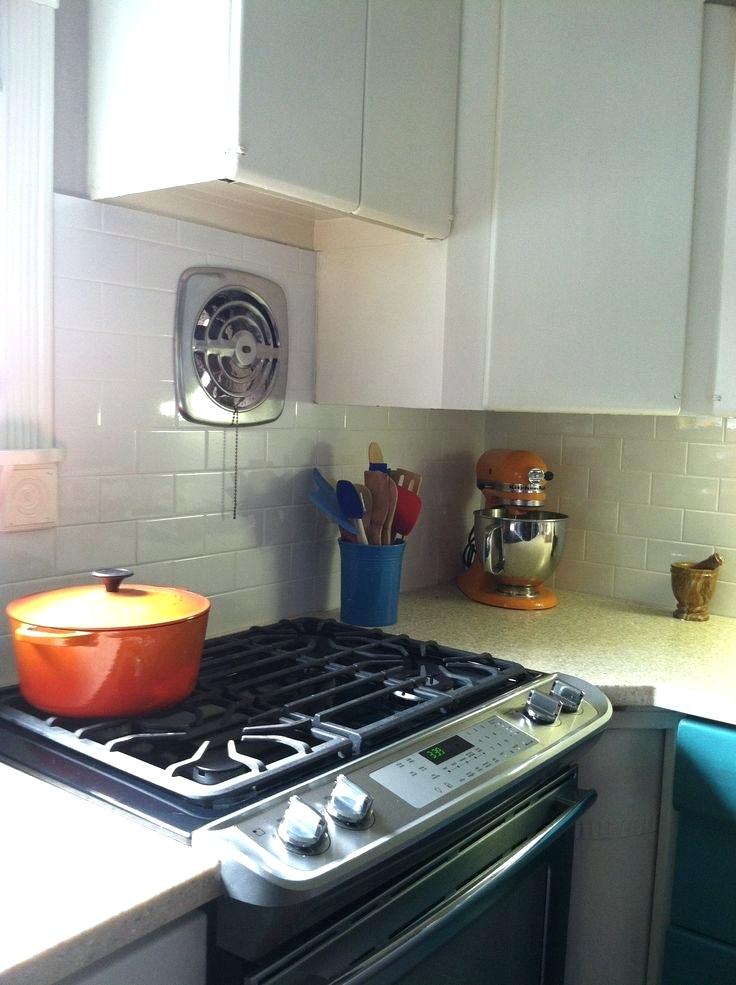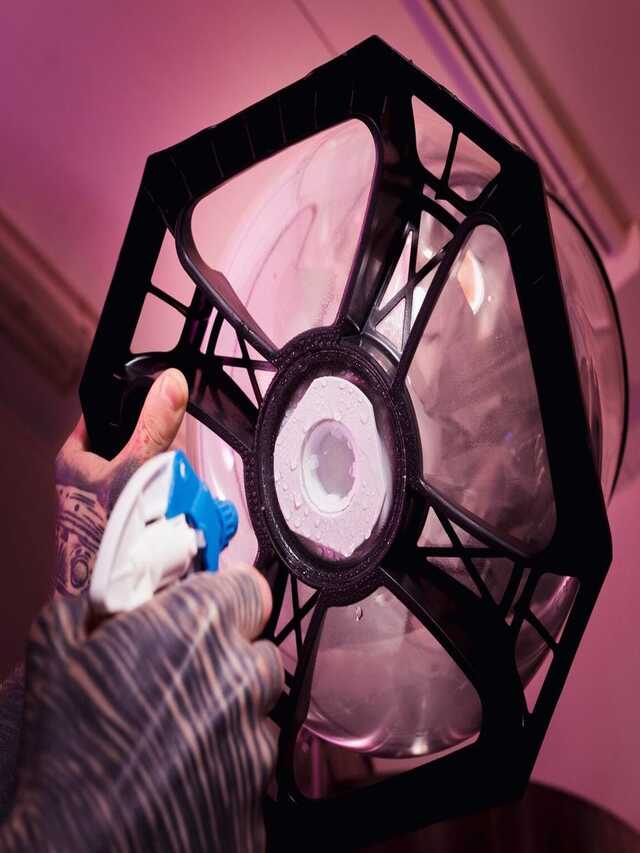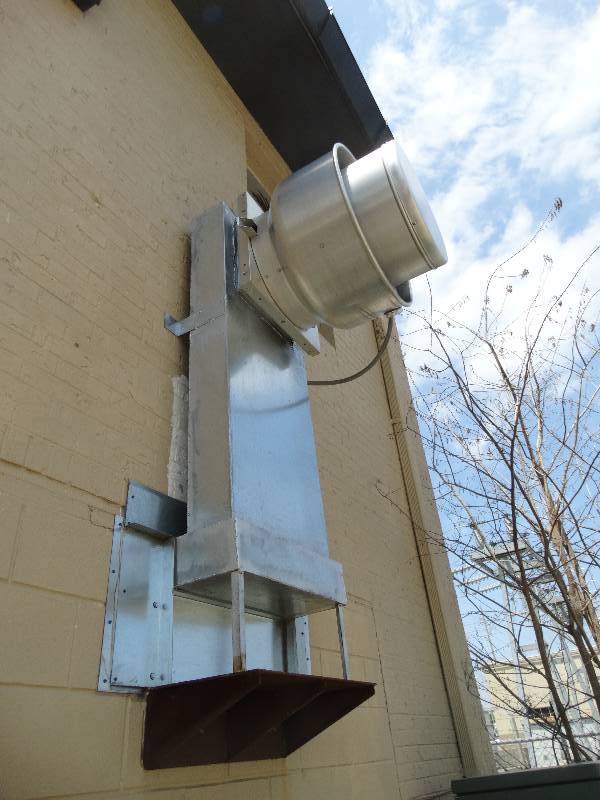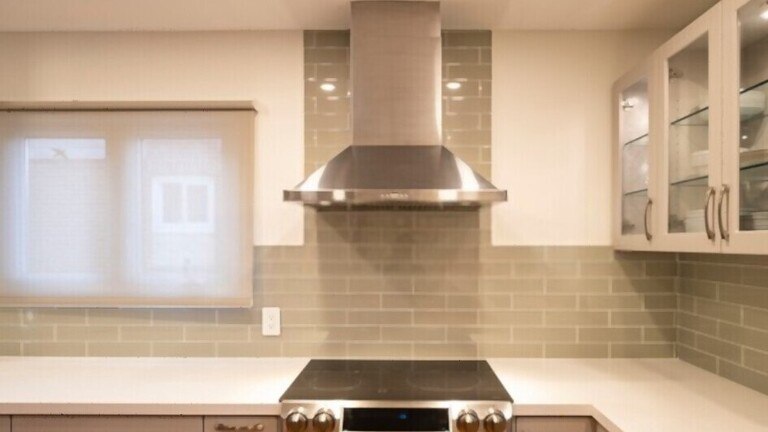Proper ventilation is essential in any kitchen, especially when it comes to removing smoke, steam, and cooking odors. One of the most popular ways to vent a kitchen exhaust fan is through the wall. This option is not only effective but also relatively easy to install. In this article, we will guide you on how to properly vent a kitchen exhaust fan through the wall.How to Vent a Kitchen Exhaust Fan Through the Wall
Before you start the installation process, make sure to choose the right spot on the wall for your exhaust fan. Ideally, it should be placed near the stove or cooktop. Once you have determined the location, follow these steps: Step 1: Check the wall for any electrical wires or plumbing pipes. Make sure to avoid cutting or damaging these during the installation process. Step 2: Use a pencil to mark the outline of the exhaust fan on the wall. Step 3: Use a jigsaw to cut out the marked area on the wall. Step 4: Install the wall cap on the outside of the wall. This will act as the exterior vent for the exhaust fan. Step 5: Place the exhaust fan in the opening on the wall and secure it with screws. Step 6: Connect the ductwork to the back of the exhaust fan and the wall cap. Use duct tape to ensure a secure connection.How to Install a Kitchen Exhaust Fan on a Wall
A wall vent is a necessary component for venting a kitchen exhaust fan through the wall. It acts as an outlet for the air to exit the kitchen and prevents any backdraft from entering the house. When choosing a wall vent, make sure to select one that is compatible with your exhaust fan and is made from durable materials.Wall Vent for Kitchen Exhaust Fan
Proper ventilation of a kitchen exhaust fan not only helps remove smoke and odors but also prevents the buildup of moisture and grease in the kitchen. To ensure your exhaust fan is vented correctly, follow these tips: Tip 1: Choose the right location for your exhaust fan. As mentioned earlier, it should be near the stove or cooktop for maximum effectiveness. Tip 2: Use the correct duct size for your exhaust fan. A duct that is too small can cause the fan to work harder, leading to decreased efficiency and increased noise. Tip 3: Install a wall cap to prevent backdraft and protect the exhaust fan from outdoor elements. Tip 4: Regularly clean and maintain your exhaust fan and ductwork to ensure proper ventilation.How to Properly Vent a Kitchen Exhaust Fan
A wall vent kit is a convenient and cost-effective solution for venting a kitchen exhaust fan through the wall. It typically includes all the necessary components such as a wall cap, ductwork, and hardware for installation. Make sure to choose a wall vent kit that is compatible with your exhaust fan and meets any local building codes.Kitchen Exhaust Fan Wall Vent Kit
A wall mount kitchen exhaust fan is a popular choice for homeowners who want to save space and avoid having a bulky exhaust hood above their stove. With a wall mount exhaust fan, you can easily remove cooking odors and improve air quality in your kitchen. These fans come in various sizes and styles, so you can choose one that fits your kitchen's aesthetic.Wall Mount Kitchen Exhaust Fan
Venting a range hood through an exterior wall is similar to venting a kitchen exhaust fan. However, the main difference is that a range hood requires a larger duct size to accommodate the higher volume of air it needs to remove. Follow the same steps mentioned above for venting a kitchen exhaust fan through the wall, but make sure to use a larger duct and wall cap.How to Vent a Range Hood Through an Exterior Wall
If you have a wall-mounted range hood, the installation process may be slightly different. Instead of cutting a hole through the wall, you will need to mount the range hood on the wall and then connect it to the ductwork. Make sure to follow the manufacturer's instructions for proper installation.Installing a Wall-Mounted Range Hood
Installing a ducted range hood on an exterior wall is similar to installing a wall-mounted range hood. However, you will need to cut a hole on the exterior wall for the ductwork to pass through. Make sure to seal any gaps around the duct to prevent air leakage and ensure proper ventilation.How to Install a Ducted Range Hood on an Exterior Wall
Similar to a kitchen exhaust fan, a range hood also requires a wall vent for proper ventilation. Make sure to choose a wall vent that is compatible with your range hood and is made from high-quality materials. It is also essential to clean and maintain the vent regularly to prevent any blockages that may affect the range hood's performance.Wall Vent for Range Hood
Benefits of Venting Your Kitchen Exhaust Fan Through the Wall

Improved Indoor Air Quality
 When cooking, a lot of smoke, grease, and odors can be produced, which can quickly fill up your kitchen and spread throughout your home. By venting your kitchen exhaust fan through the wall, you can effectively remove these pollutants from your home, ensuring that your indoor air quality remains fresh and clean. This is especially important for those with respiratory issues, such as asthma or allergies, as it can help alleviate symptoms and make for a more comfortable living space.
When cooking, a lot of smoke, grease, and odors can be produced, which can quickly fill up your kitchen and spread throughout your home. By venting your kitchen exhaust fan through the wall, you can effectively remove these pollutants from your home, ensuring that your indoor air quality remains fresh and clean. This is especially important for those with respiratory issues, such as asthma or allergies, as it can help alleviate symptoms and make for a more comfortable living space.
Prevents Grease Build-Up
 Another advantage of venting your kitchen exhaust fan through the wall is that it helps prevent grease build-up on your kitchen surfaces. When cooking, grease can easily become airborne and settle on your countertops, cabinets, and walls, creating a sticky and difficult-to-clean mess. By venting it outside, you can significantly reduce the amount of grease that accumulates in your kitchen, making cleaning and maintaining a breeze.
Another advantage of venting your kitchen exhaust fan through the wall is that it helps prevent grease build-up on your kitchen surfaces. When cooking, grease can easily become airborne and settle on your countertops, cabinets, and walls, creating a sticky and difficult-to-clean mess. By venting it outside, you can significantly reduce the amount of grease that accumulates in your kitchen, making cleaning and maintaining a breeze.
Reduces Moisture and Humidity
 Cooking also produces a significant amount of steam and moisture, which can lead to high humidity levels in your home. This can cause a range of issues, including mold growth, peeling wallpaper, and warped cabinets. By venting your kitchen exhaust fan through the wall, you can effectively remove excess moisture from your home, preventing these problems from occurring and maintaining a healthy and comfortable indoor environment.
Cooking also produces a significant amount of steam and moisture, which can lead to high humidity levels in your home. This can cause a range of issues, including mold growth, peeling wallpaper, and warped cabinets. By venting your kitchen exhaust fan through the wall, you can effectively remove excess moisture from your home, preventing these problems from occurring and maintaining a healthy and comfortable indoor environment.
Enhances Energy Efficiency
 Venting your kitchen exhaust fan through the wall can also contribute to your home's energy efficiency. When the fan is properly vented outside, it can help remove hot air and odors from your kitchen, reducing the need for air conditioning and improving overall energy efficiency. This can lead to lower energy bills and a more environmentally-friendly home.
In conclusion,
venting your kitchen exhaust fan through the wall offers numerous benefits for your home. It not only improves indoor air quality, prevents grease build-up, and reduces moisture and humidity, but it also enhances energy efficiency. With these advantages in mind, it's clear that venting your kitchen exhaust fan through the wall is a smart and practical choice for any homeowner. So why wait? Make the switch today and enjoy a cleaner, healthier, and more efficient home.
Venting your kitchen exhaust fan through the wall can also contribute to your home's energy efficiency. When the fan is properly vented outside, it can help remove hot air and odors from your kitchen, reducing the need for air conditioning and improving overall energy efficiency. This can lead to lower energy bills and a more environmentally-friendly home.
In conclusion,
venting your kitchen exhaust fan through the wall offers numerous benefits for your home. It not only improves indoor air quality, prevents grease build-up, and reduces moisture and humidity, but it also enhances energy efficiency. With these advantages in mind, it's clear that venting your kitchen exhaust fan through the wall is a smart and practical choice for any homeowner. So why wait? Make the switch today and enjoy a cleaner, healthier, and more efficient home.































































































